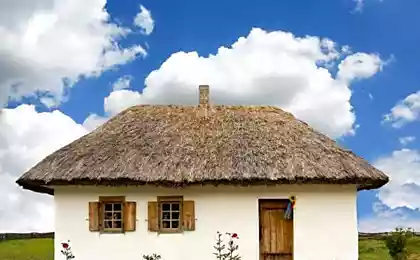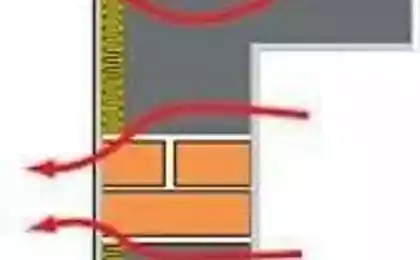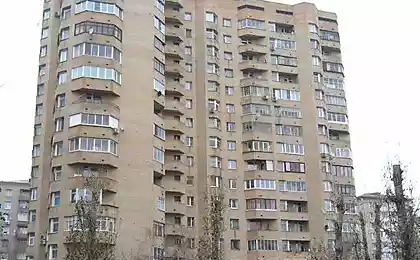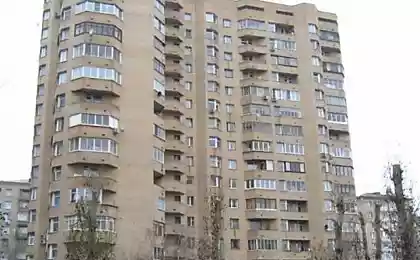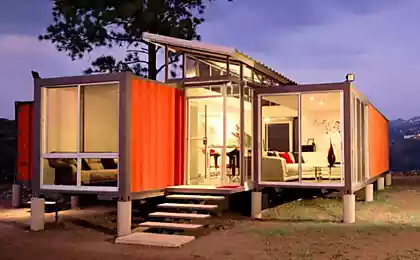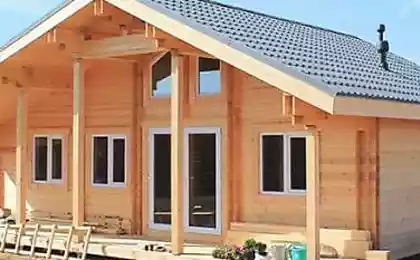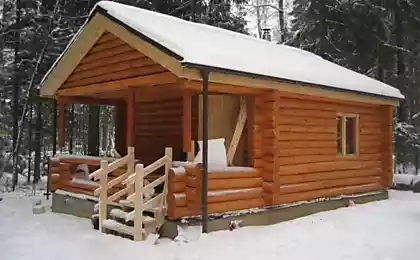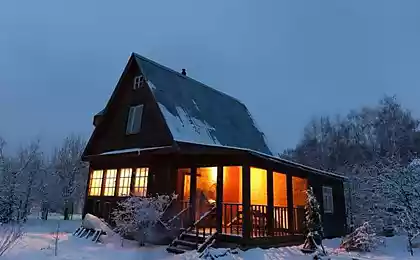683
Comparison of heat loss of houses from different materials
It is considered that for an average strip of Russia, the capacity of the heating systems shall be calculated based on the ratio of 1 kW per 10 m2 of heated area. What is stated in the SNP and what are the actual calculated heat loss of homes built from different materials?

SNiP indicates what kind of house can be considered, so to say, correct. From it we borrow building code for the Moscow region and compare them with the typical houses, built of timber, logs, foam concrete, aerated concrete, brick and timber frame technology.
As it should be according to the rules (SNiP)SNiP 23-02-2003 "Thermal protection of buildings" defines "Specified value of thermal resistance of enclosing structures" of residential premises range from 2.1 to 8.2 m2·°C/W depending on their situation and degree-days. Degree days – notional value expressed in the average temperature difference inside and outside multiplied by the number of days of the heating season. To find out the standard value of degree-day heating period, refer to table 4.1 of the Handbook to SNiP 23-01-99. When temperature inside the room at 22 degrees for the Moscow region, we get a value of 5400, thus (based on the mapping table in SNiP 23-02-2003), the value of heat transfer resistance of the walls we will have 2.8 m2·°C/watts. This corresponds to the wall of a frame house with insulation of mineral wool with a thickness of ~100 mm. From the same table will take the resistance values for floor/ceiling (3,7 m2·°C/W) and Windows (0.45 m2·°C/W). Thus, in the house to SNiP the insulation of the roof and floor must be equivalent to 140 mm mineral wool, and a two-chamber double-glazed Windows with ordinary glass
However, we have taken the value 5,400 degree-days for the Moscow region are border to a value of 6000, which is in accordance with SNiP the resistance to heat transfer of walls and roof shall be 3.5 and 4.6 m2·°C/W respectively, which is equivalent to 130 and 170 mm mineral wool with thermal conductivity of λА=0,038 W/(m·°K).
In realitypeople Often build "karkasnyi", log, lumber and stone houses on the basis of the available materials and technologies. For example, to match the SNiP, the diameter of logs must be greater than 70 cm, but this is absurd! Because they often build as easier or as more like.
For comparative calculations, we will use the handy calculator heat loss, which is located on the site of its author. To simplify the calculations we take single-storey rectangular room with sides 10 x 10 meters. One wall of the blind, on the other two small Windows with triple glazing, plus one insulated door. The roof and the ceiling is insulated with 150 mm of rock wool as the most typical option.
In addition to the heat loss through wall there is the concept of infiltration – air infiltration through walls, as well as the concept of domestic heat (from the food, equipment, etc.), which according to SNiP is equal to 21 W per m2. But we take this into account now will not. As well as losses on ventilation, because it is and does require a separate discussion. The temperature difference is taken as 26 degrees (22 in the room and -4 outside, as averaged over the heating season in Moscow region).
So here's the final comparison chart of heat loss of houses made of different materials:
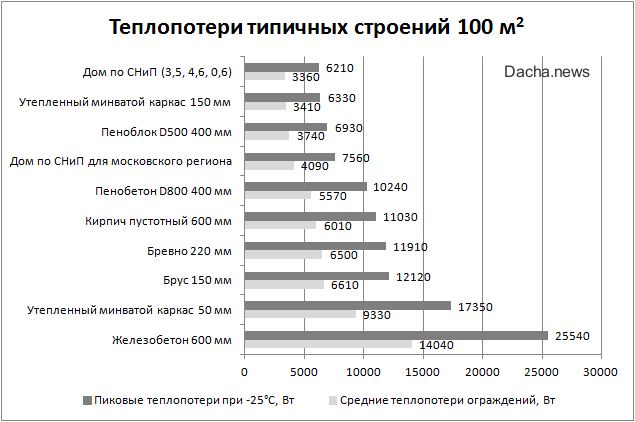
Peak heat loss calculated for an outside temperature of -25°C. They show what the maximum power needs to be heated. "Building on SNiP (3,5, 4,6, 0,6)" is a calculation based on more stringent building regulations for thermal resistance of walls, roofs and floors, which is applicable to homes in a little more Northern regions than in the Moscow oblast. Although, often, can be applied to it.
The main conclusion – if the building you are guided by the SNiP, the heating capacity should be put not 1 kW per 10 m2, as is commonly believed, and 25-30% less. And that's not including household heat dissipation. However, to abide by does not always work, and a detailed calculation of the heating system it is better to entrust qualified engineers. published
Source: dacha.news/teplopoteri_domov/

SNiP indicates what kind of house can be considered, so to say, correct. From it we borrow building code for the Moscow region and compare them with the typical houses, built of timber, logs, foam concrete, aerated concrete, brick and timber frame technology.
As it should be according to the rules (SNiP)SNiP 23-02-2003 "Thermal protection of buildings" defines "Specified value of thermal resistance of enclosing structures" of residential premises range from 2.1 to 8.2 m2·°C/W depending on their situation and degree-days. Degree days – notional value expressed in the average temperature difference inside and outside multiplied by the number of days of the heating season. To find out the standard value of degree-day heating period, refer to table 4.1 of the Handbook to SNiP 23-01-99. When temperature inside the room at 22 degrees for the Moscow region, we get a value of 5400, thus (based on the mapping table in SNiP 23-02-2003), the value of heat transfer resistance of the walls we will have 2.8 m2·°C/watts. This corresponds to the wall of a frame house with insulation of mineral wool with a thickness of ~100 mm. From the same table will take the resistance values for floor/ceiling (3,7 m2·°C/W) and Windows (0.45 m2·°C/W). Thus, in the house to SNiP the insulation of the roof and floor must be equivalent to 140 mm mineral wool, and a two-chamber double-glazed Windows with ordinary glass
However, we have taken the value 5,400 degree-days for the Moscow region are border to a value of 6000, which is in accordance with SNiP the resistance to heat transfer of walls and roof shall be 3.5 and 4.6 m2·°C/W respectively, which is equivalent to 130 and 170 mm mineral wool with thermal conductivity of λА=0,038 W/(m·°K).
In realitypeople Often build "karkasnyi", log, lumber and stone houses on the basis of the available materials and technologies. For example, to match the SNiP, the diameter of logs must be greater than 70 cm, but this is absurd! Because they often build as easier or as more like.
For comparative calculations, we will use the handy calculator heat loss, which is located on the site of its author. To simplify the calculations we take single-storey rectangular room with sides 10 x 10 meters. One wall of the blind, on the other two small Windows with triple glazing, plus one insulated door. The roof and the ceiling is insulated with 150 mm of rock wool as the most typical option.
In addition to the heat loss through wall there is the concept of infiltration – air infiltration through walls, as well as the concept of domestic heat (from the food, equipment, etc.), which according to SNiP is equal to 21 W per m2. But we take this into account now will not. As well as losses on ventilation, because it is and does require a separate discussion. The temperature difference is taken as 26 degrees (22 in the room and -4 outside, as averaged over the heating season in Moscow region).
So here's the final comparison chart of heat loss of houses made of different materials:

Peak heat loss calculated for an outside temperature of -25°C. They show what the maximum power needs to be heated. "Building on SNiP (3,5, 4,6, 0,6)" is a calculation based on more stringent building regulations for thermal resistance of walls, roofs and floors, which is applicable to homes in a little more Northern regions than in the Moscow oblast. Although, often, can be applied to it.
The main conclusion – if the building you are guided by the SNiP, the heating capacity should be put not 1 kW per 10 m2, as is commonly believed, and 25-30% less. And that's not including household heat dissipation. However, to abide by does not always work, and a detailed calculation of the heating system it is better to entrust qualified engineers. published
Source: dacha.news/teplopoteri_domov/
